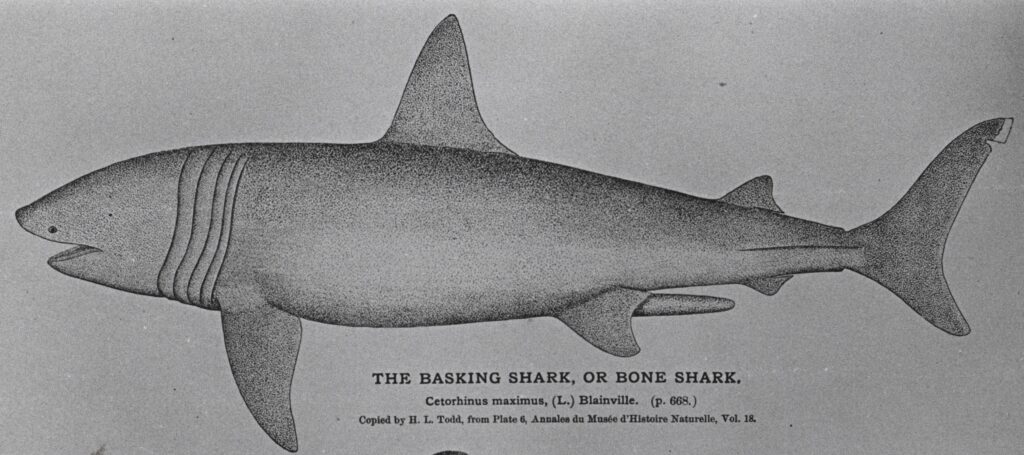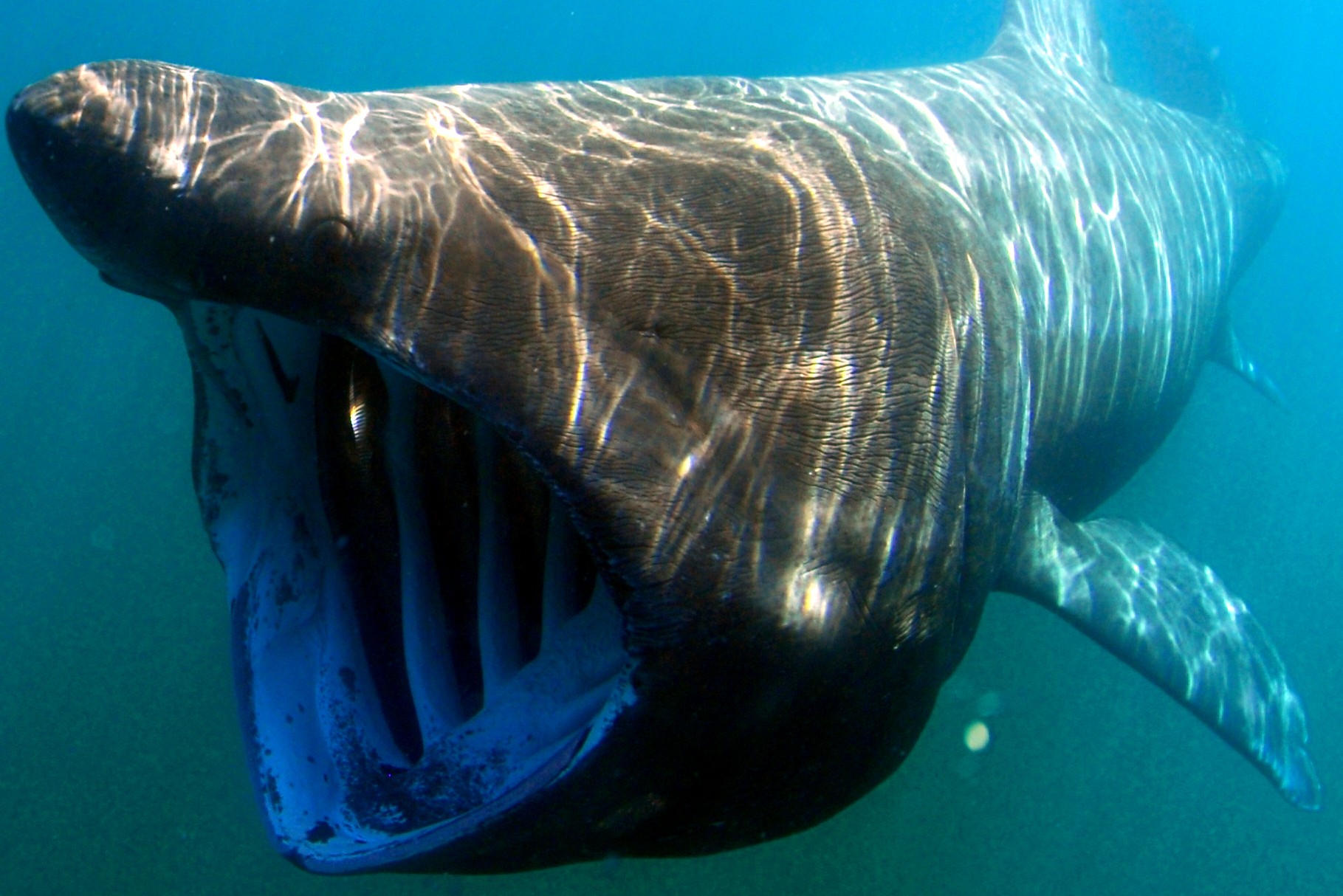Basking sharks (Cetorhinus maximus) are a filter feeding species of shark, pumping plankton-rich water through their gill rakers to feed. They are the second largest species of shark, or fish for that matter, growing up to 40 feet in length, just behind whale sharks at around 60 feet. This species is listed as an endangered species by the IUCN, and can be hard to protect due to their highly migratory nature, and unusually long gestation period (2-3 years). Basking sharks inhabit a wide range of waters, especially colder, more temperate locations. They are highly mobile, following plankton migration patterns, often congregating in plankton rich areas to feed or mate in the summer months. Because of their unusually mobile behavior, and the fact that they only come up to the surface to feed, basking sharks are quite hard to research, and not much is known about their response to our rapidly warming waters.
To study this, scientists from the Institute of Marine Research in Norway recently attached pop-up satellite archival tags to two female basking sharks in the Arctic, tracking their movements throughout the winter and spring months. The results were very surprising, showing stark differences in the behavior and migration patterns of the two sharks. One of the females travelled to the warmer waters of Azores in the mid-Atlantic during winter, only returning to the northern waters during spring. During this time, this particular female experienced all sorts of varied water temperatures, depths, and was even shown to be diving to follow bioluminescence events caused by plankton. The other female stayed in Arctic waters for a more prolonged period of time, before heading to waters in the North Sea around Norway and the Shetland Islands, where it experienced warmer spring waters there. Both sharks displayed extremely varied behaviors during the months they were studied, adopting various diving patterns and migratory directions throughout their journeys. One of the sharks was even recording diving into sub-zero waters, something that they were previously unknown to do.
The findings of this study showcase very clear evidence that basking sharks can exhibit very high behavioral plasticity, and are more than capable of navigating waters of all different temperatures. The researchers concluded that the main driver for these two shark’s very different behaviors was food availability, providing evidence that basking sharks are able to thrive just fine in our warming waters, provided they have a sustainable amount of food. This raises questions about the gradually declining population of basking sharks, and what measures can be taken to help this endangered species recover. Basking shark populations have declined in the past due to commercial fishing, which, concerning basking sharks, is now illegal, and have had difficulty recovering due to their aforementioned long reproduction process, but that doesn’t explain why the species continues to decline. The evidence presented in this study discounts warming oceans as a driver for this species decline, and showcases this species’ extraordinary adaptive capabilities. More research should be done to determine the cause for the decline of basking sharks, but a possible culprit could be a potential lack of food due to decreases in zooplankton from commercial fishing or climate change.

